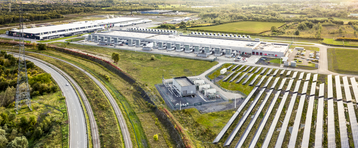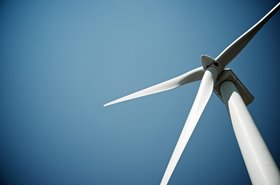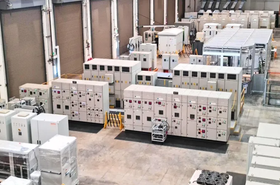Google has is using a 2.75MW battery system from Fluence to replace some diesel capacity at its St. Ghislain, Belgium data center, reducing emissions and supporting the local electricity grid.
The battery will be connected to the grid by Centrica, and will use Centrica's FlexPond software to store and discharge energy, so it can support the data center during power cuts and blackouts, and also provide energy to the grid on a short term basis to improve grid stability.
The batteries can store 5.5MWh of energy, up to half of which is available to the grid as needed.
Zero-emission backup
Google first announced plans to replace some diesel backup capacity at St. Ghislain more than a year ago in January 2021, but at the time would not name a supplier for the lithium-ion battery systems it was planning to buy. The announcement is a step towards Google's public promise to use entirely carbon-free energy by 2030.
The installation will use Fluene's Gridstack batteries, a system based on modules called Fluence Cubes which, according to the tech specification, use LFP (lithium iron phosphate) batteries made by Chinese battery maker Contemporary Amperex Technology Co., Limited (CATL).
LFP is are a lithium-ion battery chemistry that offers lower power density than Li-ion battery chemistries such as nickel manganese cobalt (NMC) and nickel cobalt aluminum (NCA), but has a better duty cycle and safety record, while using less toxic raw materials.
The installation is still very much a proof of concept, replacing one or two diesel generators, which just nibbles away a tiny fraction of the number of diesel generators at St. Ghislain. Since 2009, Google built a huge data center campus on the 90-hectare site. There are four data centers running, and a fifth due to be completed this year, so there is likely a few hundred MW of power being used there.
Late in 2021, Google bought another 50 hectares in the Wallonia region of Belgium to expand.
Google has built a solar plant on the campus and, back in 2013, announced that a data center at St. Ghislain was its first to operate without chillers.
With Centrica's FlexPond, Google can contribute power back to the grid, through a services market operated by the belgium power transmission operator Elia. Centrica will manage the batteries as a part of a virtual power plant. The batteries have a total energy capacity of 5.5MWh of which 2.75MWh will be optimized by Centrica to participate in demand response programs.
Arno Van Mourik, Director of Centrica Business Solutions International: “There are an estimated 20 gigawatts of backup diesel generators in service across the data center industry, representing a massive opportunity to deploy cleaner solutions. Managed correctly, we can not only support data centers to operate more sustainably, but also deliver grid-scale flexibility - balancing the volatility of renewable energy, in support of a 100 percent zero-carbon energy network of tomorrow.”
"Battery-based energy storage is a quickly deployed, cost-effective, and low-emission solution that not only increases the resilience of commercial and industrial facilities but also supports system-wide decarbonization and energy security goals across Europe and worldwide." said the Google announcement.
“The zero-emission backup power system provided by Fluence at our St. Ghislain facility is an important step forward in reaching our carbon-free energy goals," said Marc Oman, senior lead of data center energy and infrastructure at Google. "Not only will it allow Google to operate more cleanly during interruptions to grid reliability, but through our collaboration with Centrica, our battery will help the Belgian electricity grid maintain its target frequency and stay in balance.”




